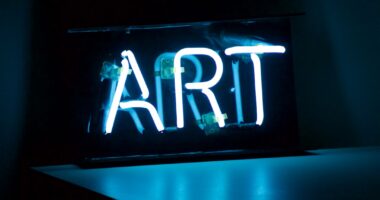The emergence of NFT (non-fungible token) collections has taken the digital art world by storm in recent years. NFTs are unique digital assets that are stored on a blockchain, making them one-of-a-kind and not interchangeable. This technology has revolutionized the way digital art is bought, sold, and owned, creating a new market for digital art collectors and enthusiasts. NFT collections can include anything from digital artwork and music to videos and virtual real estate, with each item being tokenized and sold as a unique digital asset.
NFT collections have gained popularity due to their ability to provide proof of ownership and authenticity for digital art, solving the issue of digital art piracy and copyright infringement. Artists and creators can now monetize their digital creations by tokenizing them as NFTs and selling them to collectors, who can then buy, sell, and trade these digital assets on various NFT marketplaces. The emergence of NFT collections has also opened up new opportunities for artists to showcase their work and reach a global audience, without the need for traditional art galleries or intermediaries. As a result, the NFT market has seen a surge in interest from both artists and collectors, leading to the creation of diverse and innovative NFT collections that continue to push the boundaries of digital art.
NFT Artists and Their Impact on the Digital Art World
NFT artists have had a significant impact on the digital art world, revolutionizing the way art is created, bought, and sold in the digital space. These artists have embraced blockchain technology and NFTs as a means to tokenize and sell their digital creations, bypassing traditional art market barriers and reaching a global audience of collectors and enthusiasts. NFT artists have been able to monetize their work in ways that were previously not possible, earning royalties from secondary sales of their NFTs and gaining recognition for their innovative approach to digital art.
The impact of NFT artists can be seen in the diverse and groundbreaking NFT collections that have emerged in recent years, showcasing a wide range of digital art forms, from 3D animations and virtual reality experiences to generative art and interactive installations. NFT artists have also challenged traditional notions of ownership and provenance in the art world, as NFTs provide a transparent and immutable record of ownership on the blockchain. This has led to a shift in the way art is valued and collected, with NFT artists at the forefront of this digital art revolution. As the NFT market continues to grow, NFT artists will undoubtedly play a crucial role in shaping the future of digital art and redefining the concept of art ownership in the digital age.
NFT Jobs: Opportunities in the Growing NFT Industry
The growing NFT industry has created a range of job opportunities for individuals looking to work in the digital art space. From NFT artists and developers to marketing specialists and legal advisors, there is a demand for various skill sets to support the expanding NFT market. NFT artists are in high demand as creators seek to tokenize their work and navigate the complexities of the blockchain and NFT marketplaces. Developers with expertise in blockchain technology are also sought after to build and maintain NFT platforms and marketplaces, ensuring secure transactions and efficient tokenization of digital assets.
In addition to creative and technical roles, there are opportunities for individuals with marketing, legal, and financial expertise to support NFT projects and collections. Marketing specialists can help promote NFT collections and artists, while legal advisors can provide guidance on copyright issues, licensing agreements, and intellectual property rights in the digital art space. Financial professionals are also needed to navigate the complexities of cryptocurrency transactions, royalties, and investment opportunities in the NFT market. As the NFT industry continues to grow, job opportunities will expand to support the diverse needs of artists, collectors, and platforms operating in this dynamic and evolving space.
NFT News: Latest Developments and Trends in the NFT Market
| Date | Event | Impact |
|---|---|---|
| March 2021 | First NFT artwork sold at auction | Increased interest in NFTs |
| May 2021 | NFT market reaches 2 billion in sales | Growing market size |
| August 2021 | NFTs used in music industry for album releases | Expansion into new industries |
| October 2021 | Major art institutions start to embrace NFTs | Legitimization of NFT art |
The NFT market is constantly evolving, with new developments and trends shaping the landscape of digital art ownership and investment. One of the latest trends in the NFT market is the rise of virtual real estate as a popular form of digital asset. Virtual real estate allows individuals to own and trade virtual land, buildings, and spaces within decentralized virtual worlds, creating new opportunities for investment and creativity in the metaverse. Another trend is the integration of augmented reality (AR) and virtual reality (VR) technology into NFT art experiences, allowing collectors to interact with digital artworks in immersive and innovative ways.
Furthermore, there has been a growing focus on sustainability and environmental impact within the NFT market, with artists and platforms exploring eco-friendly solutions for minting and trading NFTs. This includes initiatives to reduce energy consumption associated with blockchain transactions and explore alternative methods for tokenizing digital assets. Additionally, there has been an increasing emphasis on inclusivity and diversity within NFT collections, with artists from underrepresented communities gaining visibility and recognition in the digital art space. These developments reflect the dynamic nature of the NFT market and its potential to drive positive change within the art world.
The Future of Digital Art Ownership: Exploring NFT Collections
The future of digital art ownership lies in the continued exploration and expansion of NFT collections as unique and valuable digital assets. As blockchain technology continues to advance, so too will the capabilities of NFTs to represent a wide range of digital creations, from artwork and music to virtual experiences and collectibles. The concept of owning digital art will become more mainstream as NFT collections gain wider acceptance among collectors, institutions, and mainstream audiences. This shift will redefine traditional notions of art ownership and provenance, opening up new possibilities for artists to monetize their work and for collectors to engage with digital art in innovative ways.
Furthermore, the future of digital art ownership will likely see increased integration with virtual reality (VR) and augmented reality (AR) technology, allowing collectors to showcase their NFT collections in immersive virtual environments. This will create new opportunities for artists to create interactive and multi-dimensional artworks that transcend traditional physical limitations. Additionally, advancements in blockchain technology will lead to improved security, scalability, and interoperability for NFTs, making them more accessible and versatile for a global audience. As the future unfolds, NFT collections will continue to shape the landscape of digital art ownership, offering new possibilities for creators, collectors, and enthusiasts alike.
NFT Marketplaces: Where to Buy and Sell NFT Art

NFT marketplaces have become essential platforms for buying and selling digital art as non-fungible tokens (NFTs), providing a space for artists to showcase their work and collectors to discover unique digital assets. Some popular NFT marketplaces include OpenSea, Rarible, Foundation, SuperRare, and KnownOrigin, each offering a diverse range of digital artworks across various mediums such as visual art, music, videos, virtual real estate, and more. These platforms enable artists to tokenize their creations as NFTs, set royalty fees for secondary sales, and engage with a global community of collectors who can bid on or purchase these unique digital assets.
NFT marketplaces also provide collectors with access to a wide range of digital art from emerging and established artists alike, allowing them to diversify their collections with unique and rare pieces. These platforms offer transparent transaction histories on the blockchain, providing proof of ownership and authenticity for each NFT. Additionally, some marketplaces offer features such as curation programs, virtual exhibitions, and community events that further enhance the experience of buying and selling NFT art. As the demand for digital art continues to grow, NFT marketplaces will play a crucial role in shaping the future of the digital art market by providing a space for creators and collectors to connect and transact in this dynamic space.
NFT Collectors: The New Wave of Art Investors
NFT collectors represent a new wave of art investors who are actively engaging with digital art as non-fungible tokens (NFTs), acquiring unique digital assets as part of their investment portfolios. These collectors are drawn to the potential for value appreciation in rare or sought-after NFTs, as well as the opportunity to support emerging artists in the digital space. The rise of NFT collectors has brought attention to a wide range of digital artworks across various mediums such as visual art, music, videos, virtual real estate, collectibles, and more. This has created a vibrant marketplace for artists to showcase their work and connect with a global community of collectors who are eager to acquire these unique digital assets.
NFT collectors are also driving innovation in the digital art space by supporting new forms of creativity such as generative art, interactive installations, virtual reality experiences, and more. They are actively participating in auctions, bidding on rare pieces, and engaging with artists through social media platforms and virtual events. Additionally, some collectors are leveraging their expertise in blockchain technology to explore new opportunities for tokenization and investment in the metaverse. As the role of NFT collectors continues to evolve, they will play an integral part in shaping the future of digital art ownership by driving demand for unique and innovative digital assets that redefine traditional notions of art ownership in the digital age.
If you’re interested in learning more about NFT collections and the growing job market in the NFT industry, be sure to check out this insightful article on NFT-Jobs.com. The article provides valuable insights into the opportunities and challenges within the NFT space, offering a comprehensive overview of the current landscape and potential career paths. Whether you’re a seasoned professional or just starting out, this article is a must-read for anyone looking to dive into the world of NFTs.
FAQs
What is an NFT collection?
An NFT collection is a group of non-fungible tokens (NFTs) that are created by a single artist, brand, or entity. These NFTs can be digital art, music, videos, or any other digital asset that is unique and cannot be replicated.
How are NFT collections created?
NFT collections are created by minting individual NFTs using blockchain technology. Artists and creators can use NFT marketplaces or platforms to create and sell their NFT collections.
What makes NFT collections valuable?
The value of NFT collections comes from their scarcity, uniqueness, and the demand from collectors and enthusiasts. Each NFT in a collection is one-of-a-kind and is authenticated by the blockchain, making it valuable to those who are interested in owning rare digital assets.
How can I buy or invest in NFT collections?
You can buy or invest in NFT collections by participating in NFT marketplaces, such as OpenSea, Rarible, or Foundation. These platforms allow users to browse and purchase NFTs from various collections using cryptocurrency.
Are NFT collections environmentally friendly?
The creation and trading of NFTs have raised concerns about their environmental impact due to the energy consumption of blockchain networks. Some NFT collections are taking steps to mitigate their environmental impact by using more energy-efficient blockchain technologies.





